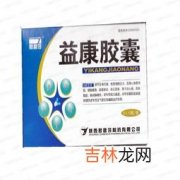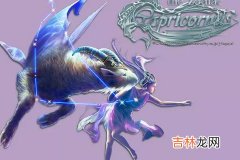目录
- 简介
- IndexedStack简介
- IndexedStack的使用
- 总结
IndexedStack简介从名字可以看出,IndexedStack是给Stack添加了一个index的功能,事实是否如此呢?我们先来看一下IndexedStack的定义:
class IndexedStack extends Stack可以看到IndexedStack继承自Stack,它实际上是Stack的子类,所以之前介绍的Stack有的功能IndexedStack全都有,并且IndexedStack是对Stack的功能进行了增强 。我们来看下它的构造函数:
IndexedStack({Key? key,AlignmentGeometry alignment = AlignmentDirectional.topStart,TextDirection? textDirection,StackFit sizing = StackFit.loose,this.index = 0,List<Widget> children = const <Widget>[],}) : super(key: key, alignment: alignment, textDirection: textDirection, fit: sizing, children: children);可以看到和Stack相比,IndexedStack多了一个index参数,但是这个参数并没有传入到super的构造函数中去,那么index到底是在哪里使用的呢?别急,IndexedStack还重写了下面的两个方法,分别是createRenderObject和updateRenderObject:
@overrideRenderIndexedStack createRenderObject(BuildContext context) {assert(_debugCheckHasDirectionality(context));return RenderIndexedStack(index: index,alignment: alignment,textDirection: textDirection ?? Directionality.maybeOf(context),);}@overridevoid updateRenderObject(BuildContext context, RenderIndexedStack renderObject) {assert(_debugCheckHasDirectionality(context));renderObject..index = index..alignment = alignment..textDirection = textDirection ?? Directionality.maybeOf(context);}和Stack相比,IndexedStack在这两个方法中使用的是RenderIndexedStack,而Stack使用的是RenderStack 。所以虽然IndexedStack继承自Stack,但是两者在表现上是有本质区别的 。
对于Stack来说,一个widget被放在另外一个widget之上,但是多个widget可以同时展示出来 。而对于IndexedStack来说,它只会展示对应index的widget 。
RenderIndexedStack也是继承自RenderStack:
【flutter系列之:flutter中可以建索引的栈布局IndexedStack】
class RenderIndexedStack extends RenderStack我们看下它的paintStack方法:@overridevoid paintStack(PaintingContext context, Offset offset) {if (firstChild == null || index == null)return;final RenderBox child = _childAtIndex();final StackParentData childParentData = https://www.huyubaike.com/biancheng/child.parentData! as StackParentData;context.paintChild(child, childParentData.offset + offset);}可以看到在paintStack方法中,只绘制了和index对应的_childAtIndex这个组件,所以如果index不匹配的话,并不会展示出来 。IndexedStack的表现有点像我们常见的tab 。
IndexedStack的使用从上面IndexedStack的构造函数中,我们知道IndexedStack需要传入一个index属性和对应的children 。
在本例中,我们给IndexedStack传入一个可变的index属性,和4个child:
IndexedStack(index: _counter,children: [widgetOne(),widgetTwo(),widgetThree(),widgetFour(),],)_counter是定义在StatefulWidget中的变量 。可以通过调用setState方法对index进行修改,从而实现动态切换child的目的 。这里的child widget很简单,我们使用了不同大小的SizedBox,SizedBox中设置不同的color来方便观察切换的效果:
Widget widgetOne() {return SizedBox(width: 100,height: 100,child: Container(color: Colors.yellow,),);}最后,在Scaffold的floatingActionButton中调用_changeIndex方法实现index的改变,最终的代码如下:
经验总结扩展阅读
- 壬水女和庚金男家庭富裕 天选命定之人
- 食神格男和正印格女 天作之合享荣华
- 食神格女命的婚姻配偶 有旺夫之相运程上等
- 情侣之间做不到坦荡相处的星座配对
- 插拔式 Django之同时新增数据到两个数据库表与同时返回两个表的数据
- 微服务系列之分布式日志 ELK
- 快速安装 服务器之Apollo单机部署
- 月圆之夜镜中的记忆全成就攻略是什么
- 有活化石之称的野生动物是
- 中国的世界之最
















